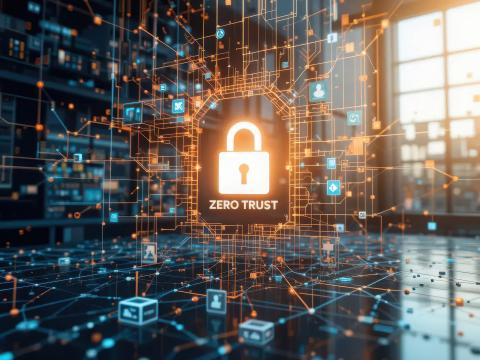David M. Wennergren, U.S. Department of the Navy
Which emerging technology will have the biggest impact on your organization in the future?
The pace of technological change is relentless. Living in a networked world offers tremendous opportunities to leverage emerging technologies to improve national defense capabilities and the quality of work and life for sailors, Marines and civilians. The advent of the Internet age opened the door for the U.S. Navy to move away from stand-alone solutions to a world of authoritative data sources that are available anywhere, anytime through self-service transactions. It is an age of knowledge, where Web services and portal technologies are allowing dramatically improved productivity and effectiveness, while eliminating the unnecessary cost of building and maintaining duplicate information solutions.
The U.S. Defense Department is committed to achieving the goals of network-centric operations and warfare. While there are a number of technologies allowing the military to “get the right information to the right person at the right time,” there are a few underlying capabilities that must be successfully addressed to make net-centricity a reality. A seamless network environment and the right portfolio of Web-based applications are crucial, but without a robust identity management infrastructure in place, the goals of net-centricity, information assurance and a paperless environment will not be achieved.
Identity management is the key to the seamless exchange of information from sensors to weapons, and to logistics, maintenance and re-supply organizations, breaking down traditional barriers between warfighting and support systems and crossing organizational boundaries that have been in place for decades. The ability to share information with the right decision makers and react with speed presumes the security of the network and the ability to trust the identities of the people, information and systems that ride on it. The successful adoption of identity management technologies is the key enabler of network-centric warfare that will provide the robust, standards-based, interoperable environment for the identification, authorization and authentication of people, software applications and hardware devices. These technologies are essential to giving U.S. warfighters global access to real-time collaboration.
The Defense Department has been a world leader in the adoption of smart card, biometric and public key infrastructure (PKI) technologies. The department team has championed the development of the federal smart card interoperability standard and has successfully deployed the first open standards-based, large-scale implementation of smart card technology in the world—the Common Access Card (CAC). The CAC combines identification, PKI technology and physical access on a single platform for identity management. More than 5 million CACs with PKI certificates have been issued, making this effort perhaps the largest identification and credentialing system in the world.
This groundbreaking and transformational effort to deploy a single integrated smart card and PKI solution across the entire department has significantly enhanced information assurance and provided the foundation for increased effectiveness and efficiency through electronic business and network-centric operations. The Defense Department’s implementation of the CAC with PKI serves as a model and should be the “gold standard” for the successful implementation of Homeland Security Presidential Directive 12.
But this is not the time to rest on laurels. The Navy has only begun to take advantage of the tremendous opportunities that biometric technologies offer. Advances in radio frequency identification, or RFID, technology are vitally important to tracking the location and condition of physical assets. Identity management efforts also must address the identity of “non-physical” items, ensuring the authenticity of executable code, Web services transactions and data. It is a future world where security is associated with individual “objects” rather than just with the perimeter and network defense.
Much work remains to be done as the number of “things” to be identified dwarfs the millions of Defense Department personnel included in identity protection and management efforts. The Navy’s partnership with industry—to find best practices, adopt innovative solutions and align to standards—will be the key to the sea services’ success. The opportunities are tremendous.




Comments